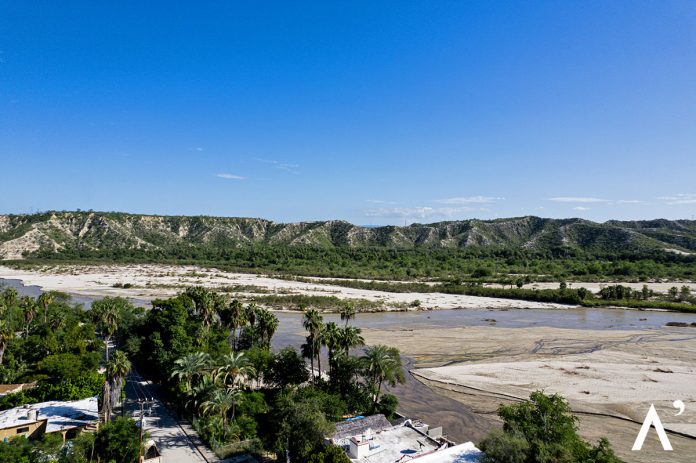This historic town was founded in 1721 by Jesuit Father Ignacio Maria Napoli with a clear mission. Santiago is a historic town, characterized by a friendly community dedicated mainly to agricultural activities and trade of local products. The Los Cabos area is blessed with abundant water and fertile lands, creating a unique radiance where nature thrives and is always embraced.
Santiago’s transformative journey is a testament to how you can find well-being in simple luxuries. To arrive there, you only need to drive 55.1 kilometres north of San Jose del Cabo on Mexico’s Federal Highway 1. This is where the adventure begins!
- – General Public Square. Francisco J. Múgica
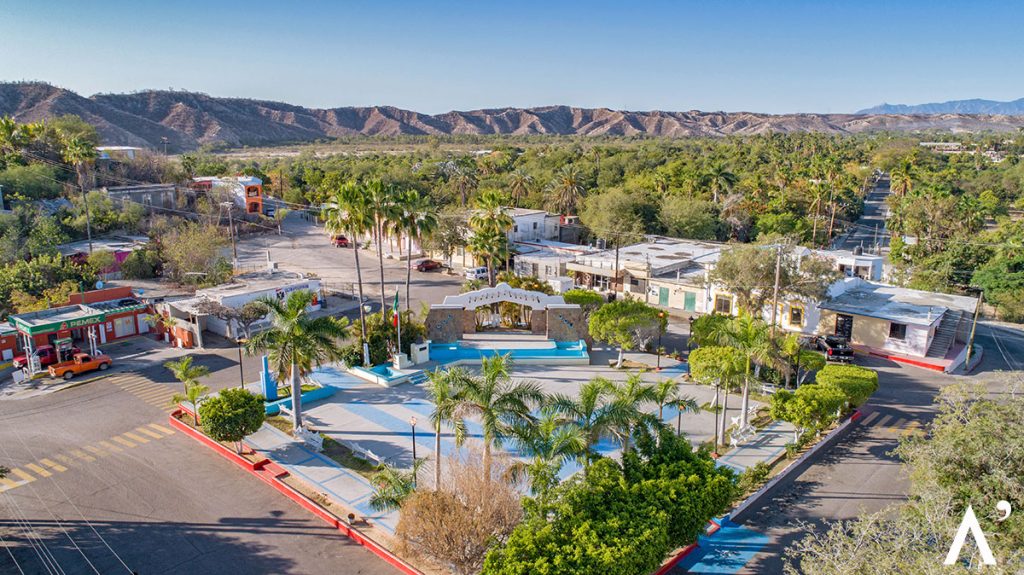
You’ll glimpse pristine streams of clear sand once you cross the branch road heading towards Santiago. During the post-rainy season, threads of water can be seen flowing down from the mountain range, creating a sparkling path of light that welcomes visitors. This space is dedicated to culture and family recreation, providing an excellent location for spending quality time with your loved ones.
There are small shops around the area selling vegetables, cheese, machaca, and regional sweets, showcasing their products.
One can sit on small benches in this peaceful place and enjoy the daily events of life in this delegation while listening to the chirping of birds in the trees.
A leisurely stroll will allow you to appreciate the intricate murals, colourful old facades, and historical monuments. Discover the true essence of Santiago by creating an itinerary that includes specific stops for engaging with the local people. Immerse yourself in the culture and gain a unique perspective that will stay with you forever.
- – The Mirador
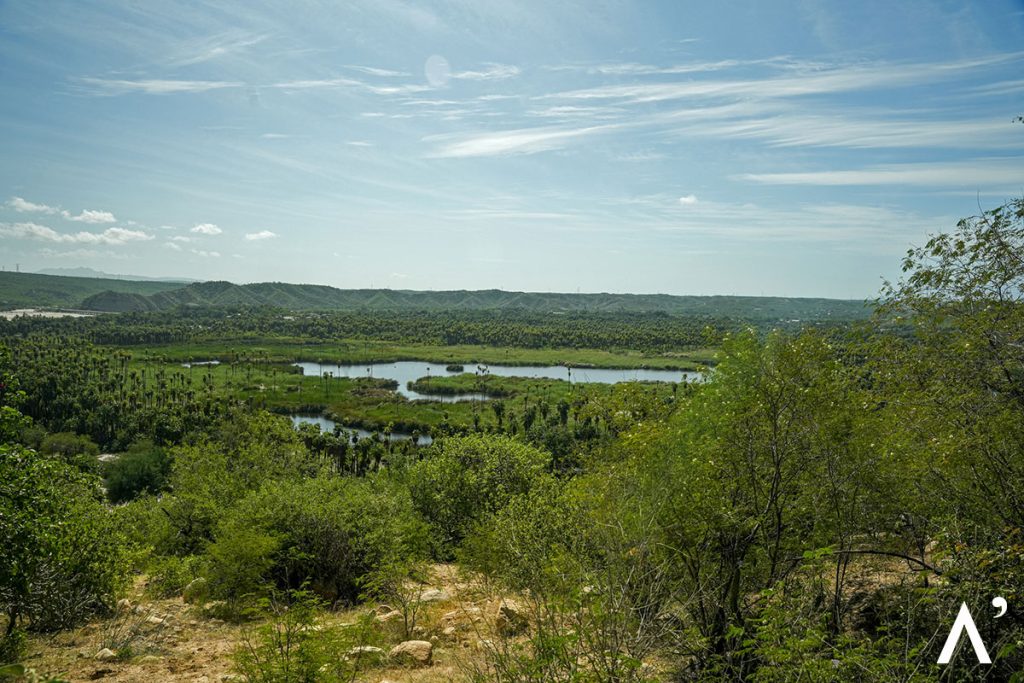
When visiting Santiago, one cannot help but contemplate the stunning view from El Mirador. El Mirador provides a panoramic view of the oasis that played a significant role in the missionary establishment of the region. Even today, the area is home to endemic and migratory birds, and it serves as a crucial water supply point for the livestock and other living beings that inhabit this fascinating ecosystem.
It’s a captivating and colourful space that is a perfect backdrop to capture memories regardless of the time.
- – Ecological Ranch “El Refugio”
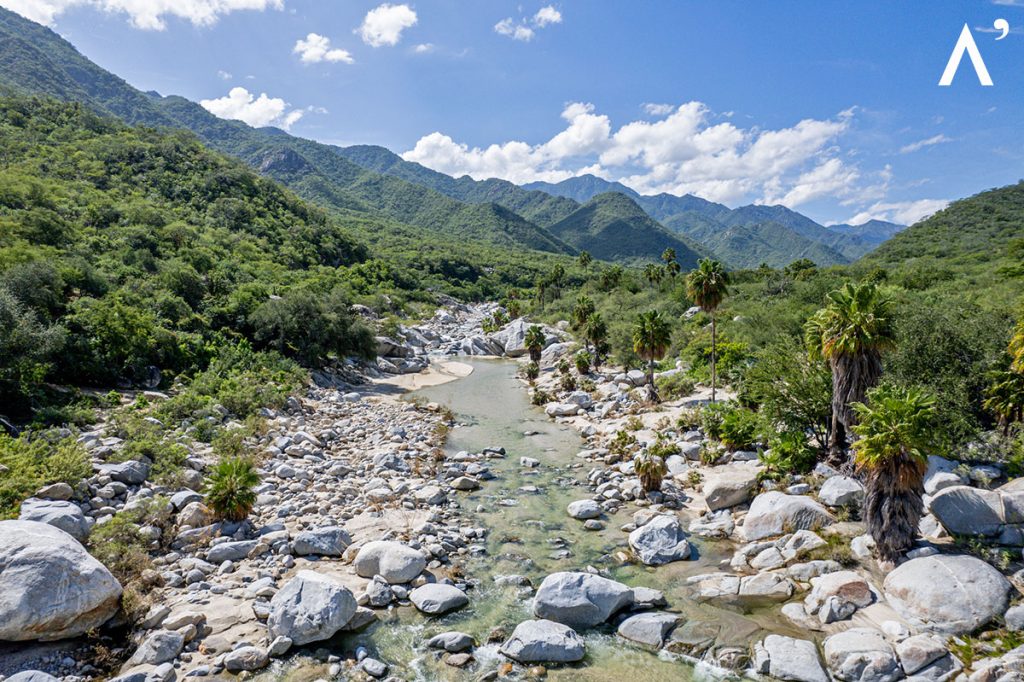
With a very particular lifestyle in the southern Californian highlands, Rancho Ecológico “El Refugio” preserves customs and traditions in a space of retreat and learning located in the foothills of the Sierra La Laguna Biosphere Reserve. The day starts with the first rays of sunshine and the aroma of Talega coffee, brewed on the stoves of the outdoor kitchen. Like many other roofs made by skilled craftsmen, the kitchen is roofed with palm leaves.
The traditional handmade flour tortillas, fresh from the comal, accompany the “Talega” coffee. The family members of Catarino Rosas Espinoza and María Luz López Torres started this project to host travellers. The ranch is surrounded by large trees, including a massive wild fig estimated to be 500 years old.
The production of saddles, confectionery, and regional dishes attracts many students and travellers interested in experiencing rural life. Adventure enthusiasts can enjoy hiking, rappelling, climbing, and observing local flora and fauna.
- – San Jorge
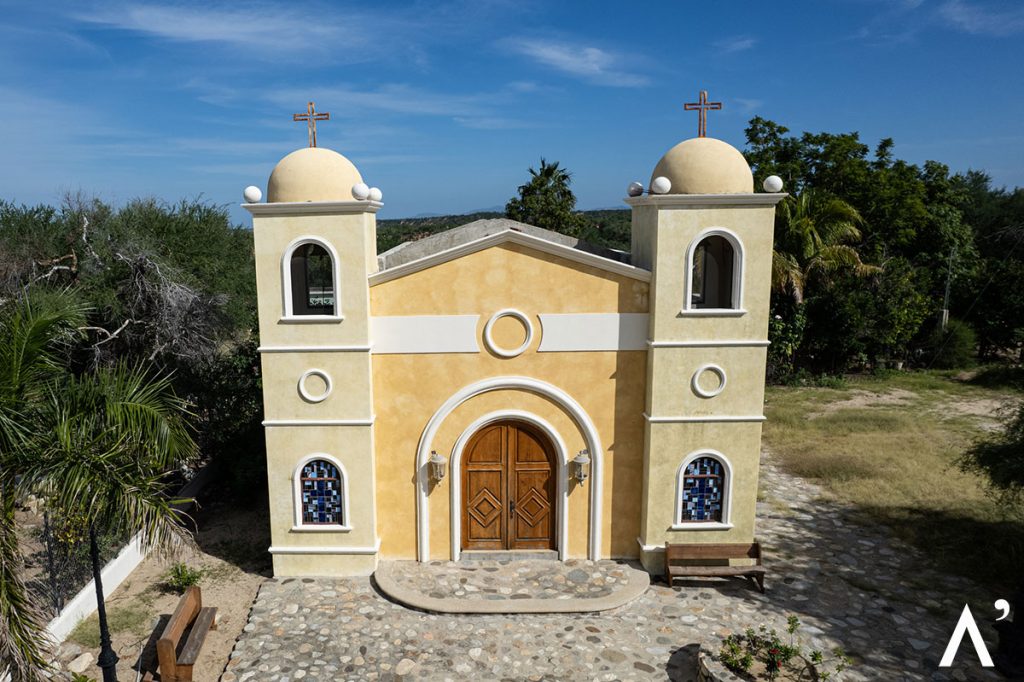
San Jorge is a small village with around 20 houses. Upon arrival, visitors are drawn to the village’s namesake church, dedicated to Saint Jorge. Upon entering, colourful stained glass windows direct one’s gaze towards a marble altar embellished with various figures and religious elements. The parishioners show their devotion continuously in this picturesque precinct.
- – Santa Rita
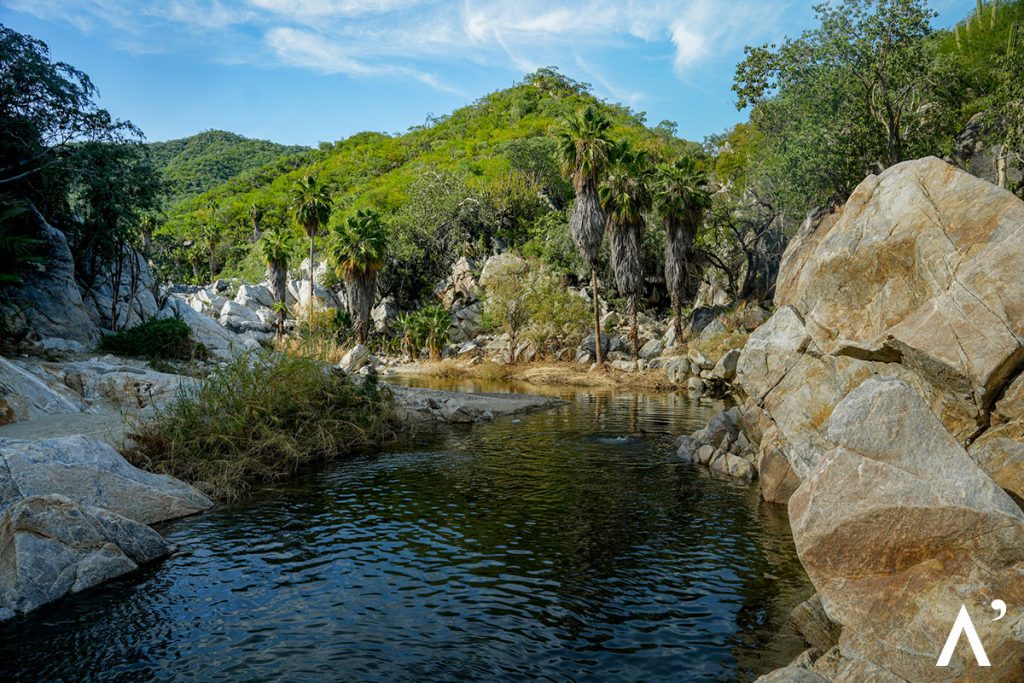
For generations, thermal water has been praised for its anti-inflammatory and antioxidant properties, which make it beneficial for health. In Santa Rita, families enjoy natural pools of warm water surrounded by beautiful scenery. Small fish curiously swim around and may even tickle your feet.
In addition, within its simple luxury, this place has the necessary facilities to extend the excursion with a picnic: palapas, barbecue grills and seating areas. It is necessary to comply with environmental conservation measures to gain access and pay a maintenance fee because the area is protected by the National Forestry Commission (CONAFOR).


